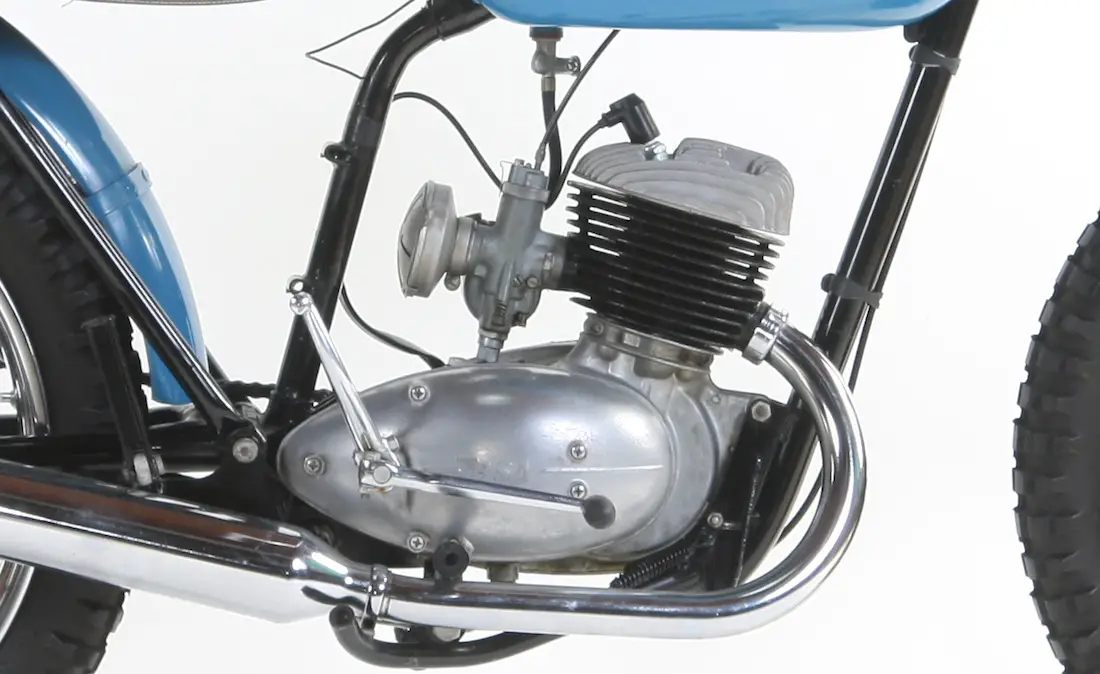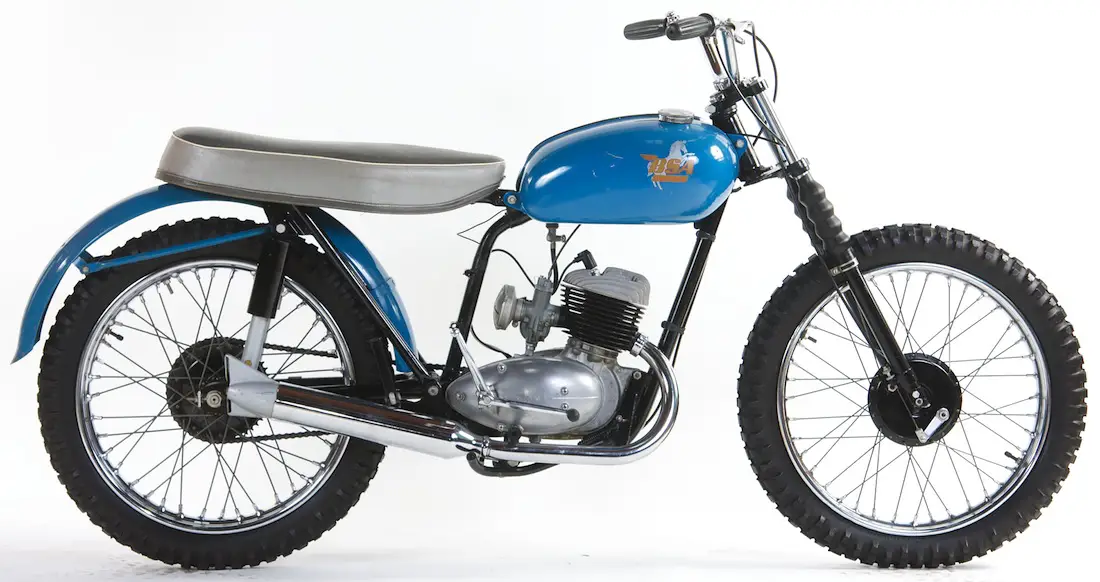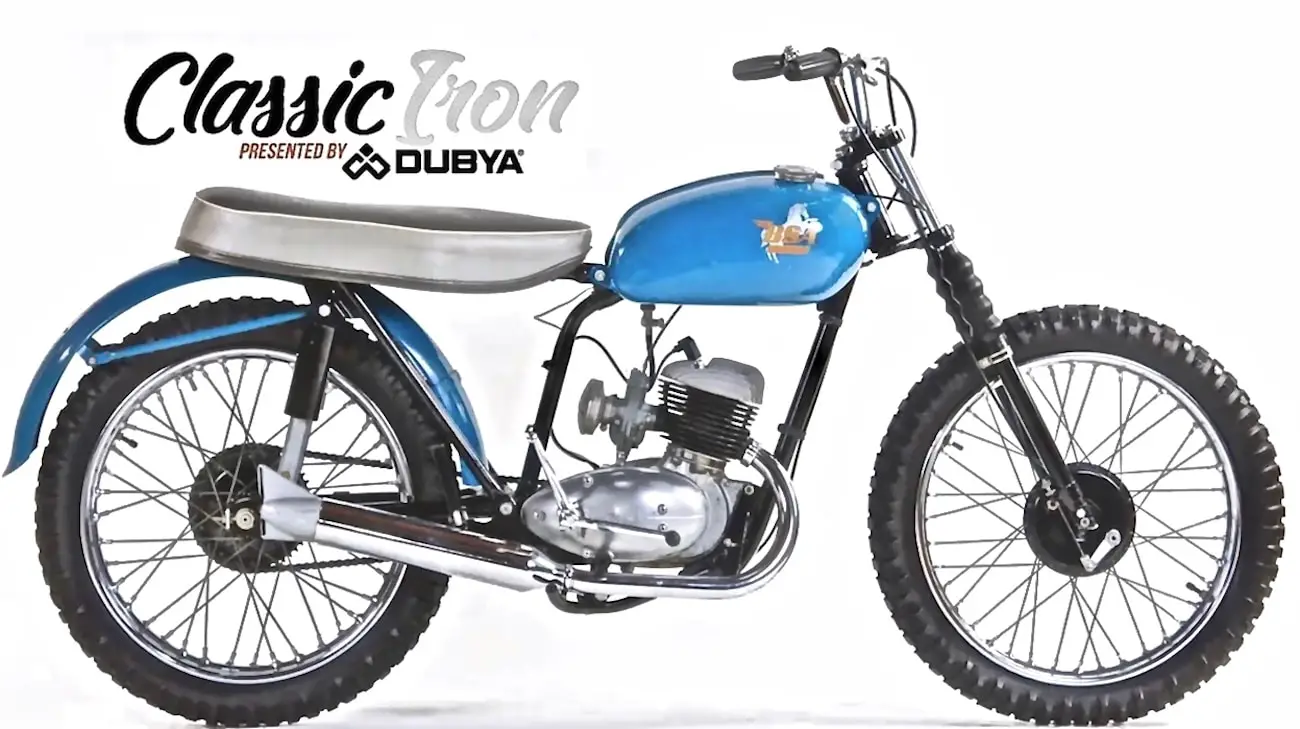CLASSIC MOTOCROSS IRON: 1965 BSA BANTAM 175 TRAIL BRONC
When BSA (Birmingham Small Arms) introduced the “Made for USA” 1964 Trail Bronc, the ads professed the Bronc was “ideal for those who want to go wilderness wandering, for hunting trips or just exploring off the beaten track” and included a picture of the machine loaded in the back of a station wagon. The ad said, “Fits your station wagon or car trunk!” For most people, the Trail Bronc name was superseded by the Bantam name—a name for a small chicken.
The Bantam was based on a proven 175cc two-stroke engine initially introduced in 1948. Though built in BSA’s Birmingham factory, the actual design was from the German DKW RT125, which BSA received as part of WWII reparations, although BSA mirror-imaged the engine design so that it would shift on the right. Bantams were not all 175cc. There was the 125cc D1 model. It was offered from 1948 to 1953 (plunger suspension was an option). The 148cc D3 was sold from 1954 to 1957. The 175cc D7 was available from 1958 until 1966. Street-going, trials and trail models were built during the D7 production years. Production numbers are estimated as high as 500,000 units produced by BSA from 1948 to 1971.
Originally, BSA did not consider the Bantam a race bike, but after owners began modifying their Bantams, BSA responded with a trail bike model in 1963—the stripped-down D7 Bantam called the Trail Bronc. Dunlop 3.00×19 tires, a semi-upswept exhaust (BSA claimed it was free-flowing), high ground clearance, no front fender and a larger sprocket were standard equipment with the Bantam 175 Trail Bronc. Another concession to offroad riding was the folding footrest design. Power output from the three-speed, 175cc two-stroke engine was 8 horsepower.
BSA importer Hap Alzina in Oakland, California, asked BSA to build this entry-level machine for the U.S. market, but its release corresponded with the introduction of the Yamaha YG1 80cc trail bike (and later with the Hodaka Ace 90), and the result was poor sales for BSA. Additionally, BSA dealers focused on the larger 500cc and 650cc four-stroke machines. The Trail Broncs sat in the dealer showrooms and some, like our featured bike, were never sold.

OUR FEATURED BSA BANTAM IS VERY SPECIAL
In 1965 the Trail Bronc sold for just under $400. To keep the price low, BSA ignored the frills. The only chrome part is the gas cap (the handlebars were painted silver). There was no speedometer, no front fender and there were no lights. The British postal service bought thousands of street-legal Bantams for telegram delivery duty, which made the Bantam one of the most commonly seen bikes in the 1960s. Our featured Bantam was one of two purchased by a San Jose BSA dealer and was never sold. The Early Years of Motocross Museum purchased the bike for $2500. Always look for the upswept exhaust with fish-tip muffler. Also, look for the long saddle, Dunlop Sport tires and original hydraulic suspension. A bonus would be the 47-tooth trail sprocket that was included with all Trail Broncs.

For more info on classic bikes go to www.earlyyearsofmx.com







Comments are closed.